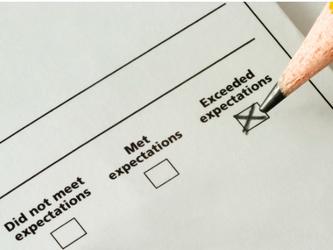Don't stop believing: Marketing and Bayesian networks

As we learn, we weigh evidence. If new evidence is strong enough, we might change our minds. We don’t assess all the data before forming a reasoned opinion, as traditional frequentist methods would otherwise demand. Instead, we consider what is probable, and update our thinking as we go. Expressed as a formula, this is Bayes’ Theorem.
Coincidentally, we seek to explain market dynamics in these terms and within this context. We point to what is most likely, given what we already know about our customers. We consider the likely impact of things we can change, while controlling for things we cannot. We reflect and adapt. Our goal is to isolate and gauge marketing’s commercial impact. The more sophisticated we become, the more behaviour we explain, the smarter our strategies and the more our budgets grow.
Unfortunately, our frequentist tendencies drag us away from this intuitive formula, often to a place where we struggle to reconcile sophistication with simplicity.
Though we begin simply enough, with aggregate scores and correlations, we soon appreciate that basic analysis is not instructive. To isolate the drivers of market share, we might control for the impact of seasonality and competitor activity. As we continue to add the necessary ingredients, we open a can of worms: ‘Brands that customers identify with, trust, recommend and consider, see increased share. Stronger brands have more customers whom identify, trust...’ It’s a snake eating its own tail. To make sense of chaos, we need a framework.
For instant credibility, we’ll shoehorn an approach borrowed from consultancies, bestsellers, or software. We quickly learn that off-the-shelf models are either too rigid or naïve. After the boardroom sets down their flamethrower, we’re sent in search of a fresh approach which speaks to our environment and position. We don’t find one, so build our own.
Our own model is scintillating. The data sings. Though colleagues will clap and nod, it fails to convince, because no one understands or trusts it. Either as a pure expression of the data, or an interpretation; it remains an academic exercise, unrecognisable to decision makers. This time, the boardroom doesn’t bother with flames. They already sense our growing urgency to get that structural equation model off their screen.
Licking our wounds, we switch perspective, from a snapshot in time, to a view over time. It takes forever to gather enough creative, spend, channel and sales data, only to discover our model is more fragile than textbooks will admit. Our messy dataset is decomposed, cudgelled with exponential smoothing, decayed, adjusted and time shifted until it splatters like jam. Dare we peer under the hood. Had we spent a bit more elsewhere, recorded spends or proxied promotional activity slightly differently, the approach returns diverging results.
We are also reminded that time does not stand still, certainly not long enough for one year to dictate the rules of the next, and never with such specificity. While the lucky claim otherwise, the outcome is the same. Every time we shoot for the stars we land in a heap on the second floor, because as we introduce complexity, we lose the plot.
Moments before walking into the ocean, we look up. Through misty eyes we behold the Reverend Bayes, hovering in splendid light. In this moment we reimagine our customers’ journey, not as a path or funnel, but as a network.
To begin, all we need is a whiteboard and a plate of biscuits, starting from the outcome we want, working backward along the scaffolding of our very own domain knowledge. As data flows in, our network populates a single table of probabilities, automatically updating our market map, turning qual into quant. It’s our own Bayesian Belief Network to rearrange as we choose.
We can then be naughty, artificially manipulate the data. This way, we study the effects of potential change. For example, are customers likely to pay more if brand perception was improved? Can we isolate likelihood to churn? We ask these questions free from statistical assumptions. We need not bully data, train black box algorithms, waste half the debrief rationalising our approach, or visually offend the audience. Rather, we mirror their own beliefs.
Better yet, we may switch tack without shame or penalty because our convictions are expressed as a balance of probabilities and like a compass, we need only pivot toward the most likely positive outcome. Resting upon this inflammable framework, one that allows marketing to be both an art and science, we’ve more than enough to change minds.
Ryan Howard is a freelance data science consultant.

We hope you enjoyed this article.
Research Live is published by MRS.
The Market Research Society (MRS) exists to promote and protect the research sector, showcasing how research delivers impact for businesses and government.
Members of MRS enjoy many benefits including tailoured policy guidance, discounts on training and conferences, and access to member-only content.
For example, there's an archive of winning case studies from over a decade of MRS Awards.
Find out more about the benefits of joining MRS here.














0 Comments